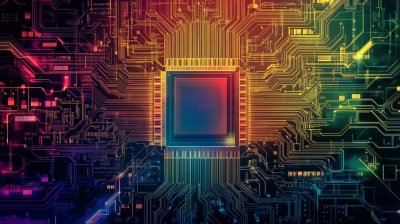
In the ever-escalating race for AI dominance, Google just made a bold move. With the unveiling of its new Ironwood processor, the tech giant has dropped a silicon gauntlet — aimed squarely at reshaping the future of artificial intelligence and challenging long-time rival Nvidia on its own turf.
The Ironwood chip isn’t just another piece of tech; it’s the product of a decade-long, behind-the-scenes engineering marathon, now revealed to the world. Designed specifically for AI inference — the rapid, real-time decision-making side of artificial intelligence — Ironwood isn’t about training AI models from scratch. It’s about making those models respond now.
From powering chatbots to streamlining customer service in milliseconds, Ironwood is the speed boost AI didn’t know it needed — but now can’t live without.
What Is Inference Computing, and Why Does It Matter?
Imagine teaching someone everything about driving a car. That’s AI training.
Now imagine that person actually driving in traffic, navigating turns, responding to sudden stops — that’s inference.
Inference computing is what allows AI to apply its training in real-world situations: a chatbot understanding your sarcasm, a medical AI recognizing symptoms instantly, or a voice assistant replying with eerie accuracy.
The faster and more energy-efficient this process is, the smoother and smarter your interaction feels. That’s the battlefield Ironwood is stepping into — and Google’s gunning for gold.
Inside Ironwood: What Makes This Chip Special?
Let’s get into the nuts and bolts — or rather, the wafers and transistors.
Ironwood is designed for scalability and raw performance, capable of operating in massive clusters of up to 9,216 units. That’s not just processing power — that’s AI superpower.
The chip combines the best features of Google’s previous processors and goes further by:
- Doubling performance-per-watt compared to the earlier Trillium chip
- Expanding memory, a game-changer for handling complex, memory-intensive AI tasks
- Optimizing for inference, meaning faster, smarter, and more energy-efficient AI responses
In short, Ironwood isn’t just stronger — it’s leaner, smarter, and built for real-world AI at scale.
TPUs vs. Ironwood: Same Team, Different Game Plans
You may know Google’s Tensor Processing Units (TPUs) — powerful chips that have been the backbone of its AI model training and cloud-based AI infrastructure. But TPUs, while mighty, are largely confined to internal systems or Google Cloud customers.
Ironwood flips the script — it’s designed to be more versatile, more scalable, and better suited for commercial AI applications that need real-time inference. It’s about giving AI muscles not just in Google’s data centers, but potentially in businesses everywhere.
Why Ironwood Isn’t Just a Chip — It’s a Strategy
Let’s be real — this is also about tech independence.
By investing in its own AI hardware, Google is making a decisive shift away from relying on Nvidia, whose chips currently dominate the AI space. It’s a strategic power move: own the hardware, control the pace, and shape the ecosystem.
With Ironwood, Google is creating an internal feedback loop of hardware and software optimization — much like Apple does with its iPhones — giving it an edge that goes beyond silicon.
What This Means for the Future of AI
Ironwood’s impact won’t just be felt in Google’s backrooms. It has the potential to transform industries:
- Healthcare: Real-time diagnostics and decision support
- Finance: Lightning-fast fraud detection and risk analysis
- Customer Service: Hyper-intelligent, responsive virtual agents
- Logistics: Dynamic route optimization and demand forecasting
As AI models get more complex, the need for lightning-fast, energy-efficient inference will only grow. And Ironwood looks ready to deliver.
Looking Ahead: A Smarter, Faster AI Future
Google’s Ironwood is more than just the latest gadget in a tech arms race — it’s a beacon of where AI is headed: faster, smarter, and deeply embedded in our daily lives.
It also signals a broader trend: the rise of tailored AI hardware. Just as every AI task doesn’t need the same brain, not every chip needs the same design. The future will be built on chips crafted for purpose — not just power.
And with Ironwood, Google just fired the starting gun.
The question now isn’t whether AI will shape our world — it’s who’s building the best tools to do it.
And if Google has its way, Ironwood might just be the processor that fuels the next great leap.

